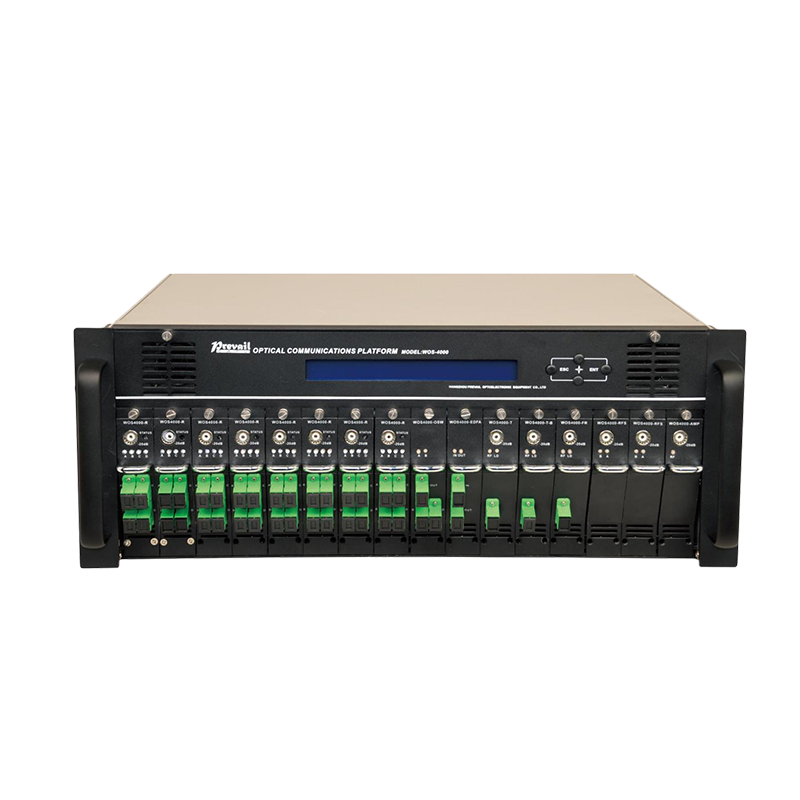HFC transmission equipment: an important pillar of modern communication networks
Hybrid Fiber-Coaxial (HFC) transmission equipment is a core component of modern broadband networks and cable TV systems. As a hybrid architecture that integrates optical fiber and coaxial cable technology, HFC transmission equipment plays a vital role in providing high-speed Internet, high-definition television and voice services.
1. Basic principles of HFC transmission equipment
HFC transmission equipment is a hybrid network architecture that combines optical fiber and coaxial cable, designed to achieve efficient data transmission and service coverage. Its basic working principle is to use optical fiber as the backbone network, responsible for long-distance, high-bandwidth data transmission; and at the user access end, coaxial cable is used to complete the "last mile" connection. This design can fully utilize the high bandwidth and low loss characteristics of optical fiber, and can also reduce costs by using existing coaxial cable infrastructure.
In the HFC network, the optical node is one of the key devices, which converts the optical signal from the optical fiber into an electrical signal and distributes it to the end user through coaxial cable. In addition, HFC transmission equipment also includes components such as optical transmitters, optical receivers, amplifiers, splitters, etc., which together constitute a complete transmission system.

2. Advantages of HFC transmission equipment
High bandwidth support
HFC networks can provide bandwidths of up to several gigabits per second (Gbps), meeting the needs of modern families for high-definition video streaming, online games, and cloud computing. The fiber backbone network ensures the stability and speed of data transmission, while coaxial cable can maintain high performance over short distances.
Compatibility and economy
HFC transmission equipment can make full use of the existing coaxial cable infrastructure without large-scale hardware replacement, significantly reducing deployment costs. At the same time, it is also compatible with a variety of communication protocols, such as DOCSIS (Data Over Cable Service Interface Specification), allowing operators to flexibly expand their service range.
Two-way communication capability
Traditional cable TV networks are usually one-way transmission, while HFC networks support two-way communication, allowing users to not only receive data (such as TV programs) but also upload data (such as Internet access). This feature lays the foundation for interactive applications (such as video on demand, online education).
Reliability and scalability
The low attenuation characteristics and anti-interference capabilities of optical fiber make HFC networks extremely reliable. In addition, by adding optical nodes or upgrading equipment, the network can be easily expanded to adapt to growing user needs.
3. Application fields of HFC transmission equipment
Cable TV (CATV)
HFC transmission equipment was originally widely used in the cable TV industry. Through the combination of optical fiber and coaxial cable, HFC networks can provide users with high-quality TV signals, including standard definition, high definition and even ultra-high definition content.
Broadband Internet Access
With the popularization of the Internet, HFC networks have become the main way for many families and businesses to access the Internet. HFC equipment based on the DOCSIS standard can provide high-speed Internet services to meet the diverse needs of users.
Voice Communication (VoIP)
HFC networks also support IP-based voice communication services (Voice over IP, referred to as VoIP). Users can enjoy integrated services of telephone, television and Internet through the same network. This "three-network integration" model greatly improves the user experience.
Smart City and Internet of Things
In the construction of smart cities, HFC transmission equipment is used in monitoring systems, intelligent transportation and public safety. In addition, with the development of the Internet of Things (IoT), HFC networks can connect a large number of sensors and smart devices to provide real-time data support for urban management.
IV. Future Development Trends
Although HFC transmission equipment has achieved great success in the field of communications, its future development also faces new opportunities and challenges with the advancement of technology:
DOCSIS technology upgrade
The continuous evolution of DOCSIS standards (such as DOCSIS 3.1 and the future 4.0 version) will further improve the performance of HFC networks. These new technologies can support higher bandwidth and lower latency, laying the foundation for 5G and the next generation of the Internet.
Fiber to the Home (FTTH) Supplement
Although HFC networks still occupy an important position, fiber to the home (FTTH) is gradually replacing some HFC networks. In the future, HFC and FTTH may form a complementary relationship, serving user groups with different needs respectively.
Green Energy-Saving Design
With the global focus on sustainable development, HFC transmission equipment manufacturers are working hard to develop more energy-saving products. For example, low-power chips and intelligent power management technology are used to reduce energy consumption during equipment operation.
HFC transmission equipment has become an indispensable part of modern communication networks with its high bandwidth, low cost and wide compatibility. Whether in cable TV, broadband Internet or smart city construction, it has demonstrated strong adaptability and expansion potential. Despite the challenges of new technologies, HFC networks still have long-term vitality and will continue to provide people with efficient and reliable communication services in the future. With the continuous innovation of technology, HFC transmission equipment will surely write a more brilliant chapter in the field of communications.

















